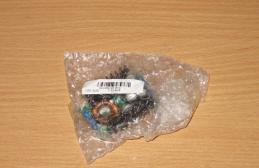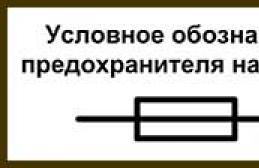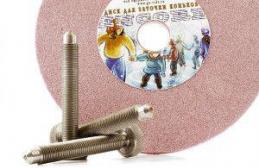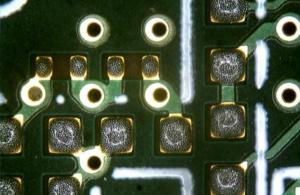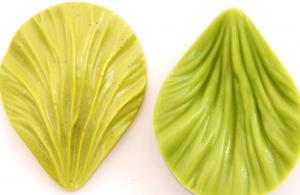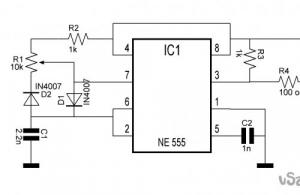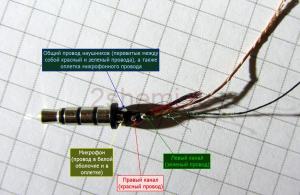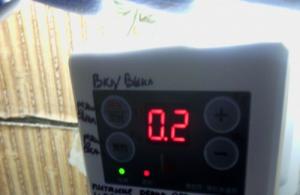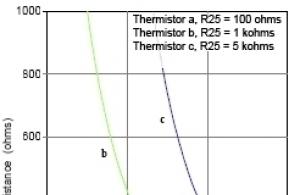Shaft straightening
In order to correctly outline methods for straightening a curved shaft, it is necessary to determine the location, value and direction of the deflection.
To determine the value and direction of deflection, it is necessary to indicate the shaft line. If indexing is carried out not on a machine, but on a special stand or directly in the unit, then care must be taken that the shaft does not move either laterally or axially when turning. Before measuring runout, mark the shaft around the circumference into 8 parts in each section being checked. Recording the indicator readings for each section when turning the rotor is carried out in the following order: the indicator leg is installed against the first mark on the shaft; the indicator readings lead to zero; the rotor is turned manually or with a crane until the indicator leg coincides with the second mark, then with the third mark, and so on until the first mark. Repeated measurement at the first point is a control one, i.e. the repeated indicator reading at the first point must coincide with the initial one (should be zero). This shows that the indicator was not knocked down during rotation, and the rotor rotates without axial or lateral displacement.
After the shaft indication is completed, the point of its maximum engagement is determined. In controlled sections, indicator readings are recorded at diametrically opposite points. The location of the greatest runout and the point where this value has a positive value are determined. This is the point of greatest deflection of the shaft. The exact location of the direction is determined by constructing a deflection curve, which is constructed from the measured values of the radial runout of the shaft in controlled sections. If the points of maximum runout are located along one generatrix of the shaft, then deflection occurs without twisting the shaft, otherwise deflection with simultaneous twisting will occur. In this case, a deflection curve is constructed for each of the planes of the longitudinal section of the shaft, numbering them according to the measurement points.
During normal operation, the shaft deflection in any section should not exceed 0.08 mm, since a large deflection reduces the overall reliability of the pump and must be eliminated.
The following shaft straightening methods are used: work hardening, thermal, thermomechanical and stress relaxation. All of the methods listed above, except cold hardening, involve heating the shaft. The choice of one method or another depends on the deflection value, diameter, length and material of the shaft.
The shaft is straightened using the work hardening method as follows. The shaft is installed in a special device with the concave side up, one end is rigidly fixed and, at the point of deflection, it is lifted slightly from below with a jack, creating tension in the shaft. Then, using a chisel having a width of 30-40 mm and a thickness of 7-10 mm, blows are applied to the selected location. During cold hardening, the surface layers of metal on the concave side tend to elongate, and since elongation does not occur, forces arise in them that straighten the shaft.
During the chasing process, after 10-15 blows, the jack and clamping device are released, and by checking the shaft using an indicator, the degree of its straightening is determined. Editing is considered complete when a deflection in the opposite direction is reached by 0.03-0.04 mm.
The shaft will remain in a straightened state until the internal forces in the shaft metal decrease. The disadvantage of this method is damage to the shaft surface and the possibility of straightening shafts with relatively small diameters. The cold hardening method is the oldest method of straightening shafts.
The thermal method of straightening shafts is the most common, as it is simple and easy to apply. This method is based on one-sided local heating of the shaft, causing it to deflect. When straightening using the thermal method, intensive local heating of the convex side is carried out to a plastic state to a shallow depth. The remaining sections of the shaft should remain as cold as possible. Due to the expansion of the heated section of the shaft, its deflection first increases. As a result of the resistance of the cold part of the shaft, compression forces arise in the upper layer. When plastically compressed fibers cool, forces are created that straighten the shaft. The thermal straightening method is used for shafts made of carbon and low-alloy steels of grades 35 and 40, with relatively small deflections. This method allows you to straighten the shafts at the place of their installation, without dismantling. It must be borne in mind that when straightening shafts using this method, the following defects are possible: high tensile forces at the boundaries of local heating and the rest of the shaft surface, appearing as a result of local heating, which can lead to the formation of tiny, difficult to detect surface cracks; surface hardening of the metal at the heating site; the appearance of local stresses having values above the tensile strength, which can lead to destruction of the shaft.
The thermal straightening process is carried out as follows. After determining the deflection value, the shaft is placed with the convex side up. The straightening area is tightly wrapped with an asbestos sheet secured with wire. For local heating, a hole is cut out in the sheet with a width of 0.1-0.15 of the shaft diameter and a length of approximately 0.3 of the shaft diameter. Heating is carried out using autogenous burner No. 7. For shaft diameters greater than 400 mm, two burners should be used. The burners provide rapid heating, while at the same time preventing the metal from melting. To do this, the flame of the burner should be as close as possible to the surface of the metal of the shaft, but at the same time it should not swing it.
Heating begins from the center, and then the burner must constantly move to the edges of the hole cut in the asbestos sheet, and again return to the center, where maximum heat is given. The heating temperature should not exceed 650 0 C. During the heating process, the shaft bulges, and this bulging must be controlled. Control is carried out by indicators installed at a certain distance from the straightening site - above and below the shaft - so that the deformation of the shaft is clearly expressed by their readings. If straightening is carried out far from the place of shaft support, then it is best to install the indicators closer to the straightening place, but so that the burner flame does not heat the indicators; if the editing is done close to the support point, then in this case it is best to install the indicator on the other side of the support. The heating time can be set according to the table, which shows the approximate heating time of one burner depending on the shaft diameter and the deflection value.
Heating time with one burner, min, depending on the diameter and deflection of the shaft:
This table provides for heating with burner No. 7. When straightening with burner No. 6, the time must be increased by approximately 1.5 times. When straightening with two burners, the time should be halved. During heating, you should very carefully monitor the color of the heated metal and do not allow the metal to overheat above the set temperature. At the same time, it is necessary to observe the indicators for the value of shaft deformation during the heating process in order to stop heating when the shaft deflection at the heating site reaches four or five times the value of the straightened deflection. After heating is completed, the treatment area is covered with a piece of asbestos sheet. In this position, the shaft is cooled for 3-4 hours, then the asbestos lining is removed and the remaining value of the shaft deflection is checked.
The disadvantage of this method of shaft straightening is the presence of residual stresses in the shaft metal, which can lead to a partial return of the shaft curvature during long-term operation. This method cannot be used to straighten shafts made of high-alloy steels and operating at high temperatures.
The straightening of the shaft by the relaxation method consists in the fact that when a section of the shaft is heated along the entire circumference and to the depth of the section at the point of curvature, the shaft is simultaneously subjected to elastic deformation using a pressure device. The shaft is kept in a heated and stressed state for some time, depending on the strength of the steel, the value of the curvature and the selected straightening temperature. Under the influence of load and elevated temperature, elastic deformation turns into plastic, and at the same time internal stresses decrease. This phenomenon is called relaxation.
To carry out straightening, the shaft is placed on a special rotary device, covered with flake graphite, which is mixed with machine or linseed oil on all surfaces except the place where the shaft runout is measured, and tightly wrapped with asbestos cord (preferably in 2 layers). It is most convenient to use an asbestos cord with a diameter of 12 mm.
First, before wrapping, it is necessary to lay the thermal converters and bring the wires to a place where it will be convenient to measure the heating temperature. Thermal converters and wires must be wrapped together with the shaft with asbestos cord. The methods for sealing thermal converters are not complicated. To measure temperatures up to 800 0 C, chromel-aluminum thermal converters should be used. they must be calibrated to the specified maximum temperature in conjunction with a galvanometer. The galvanometer is calibrated in such a way that the minimum scale division is no more than 20 0 C.
Thermal converters are arranged in such a way that it is possible to measure the temperature of the shaft at the heating site and on all sides of the heating site, and to observe the degree of temperature spread along the length of the shaft. In the heating area, it is advisable to install two thermal converters, diametrically opposed. Their wires passing through the heated zone of the shaft must be insulated with porcelain beads or asbestos cord; their ends are brought out near the neck of the shaft in such a way that they do not interfere with the rotation of the shaft. At the output point, the ends can be connected to sockets fixed to the shaft.
An induction heater coil is wound onto the shaft at the heating site, which is rigidly fixed to a frame or some special support. Coils are selected according to the diameter of the shaft at the heated location. Thus, to heat a shaft with a diameter of 300 mm to a temperature of 650 0 C, a coil with a magnetomotive force of about 20,000 A is required. The coil is made 300-600 mm wide, depending on its location. Depending on the current strength, a cable with a cross-sectional area from 60 to 200 mm 2 is used. For the coil, it is best to take a copper multicore flexible cable.
The most appropriate is to use inductors to heat the shaft, which are used for heat treatment of pipeline joints after welding. The internal diameter of the inductor is determined by the diameter of the shaft, the thickness of the insulation layer and the size of the gap (12-15 mm), which ensures free rotation of the shaft. The shaft is installed with the convex side up, a pressure device is assembled and it creates tension to straighten the shaft.
The external load, which creates a bend of the shaft in the direction opposite to the existing deflection, is determined by the curvature of the shaft, the heating temperature, the relaxation characteristics of the steel and the holding time in a stressed state. The permissible stress during deflection for straightening in one step is limited by the danger of stress concentration at the point of application of the load for straightening and the danger of cracks forming in the stretched metal fibers. Based on these considerations, it is recommended to create such stresses in the metal that would not exceed half the tensile strength or tensile strength of a given steel at a temperature of 600 0 C. The table shows the permissible stresses for individual steel grades.
Permissible stresses:
If there is no data on tensile strength, then the maximum permissible stress can be taken as 50 MPa. The force that must be applied so that the stress in the shaft cross-section does not exceed 50 MPa, and the deflection corresponding to this stress is determined by calculation.
Force P is calculated using the following formulas:
Where? - internal stress (or permissible stress at a temperature of 600 0 C, l - length of the shaft between the supports, a, b - length of the arms from the support to the place where the load P is applied, W - moment of resistance.
the front or rear end of the shaft is straightened, i.e. cantilever part of the shaft, and force P is applied at the end of the shaft:
The practical application of force P is checked by the shaft deflection arrow, which is obtained by bending the shaft with a tensioning device. This deflection is calculated using the following formulas:
force P is not applied in the middle of the shaft:
where E is the modulus of elasticity, J is the moment of inertia;
force P is applied in the middle of the shaft:
force P applied at the end of the shaft:
It should be borne in mind that for shaft deflections of less than 0.2 mm, it is necessary to take into account when adjusting their deflections due to their own mass f c . In this case, the force P must be reduced by the force P c, calculated by the formula
and the deflection arrow f - by the deflection f c, calculated by the formula
If the actual value of the deflection to be straightened is greater than the calculated value f, then straightening the shaft should occur in several stages in such a way that each application of force by a pressing device does not cause a deflection value greater than the calculated value of the deflection arrow f, therefore, the resulting stresses in the section shaft will not exceed the permissible limits.
When applying pressure to create an elastic deflection of the shaft during straightening, it is necessary to ensure that the shaft deflects strictly vertically. To do this, the pressure should be applied evenly, while simultaneously tightening the nuts of the pressure device. Having created the necessary pressure and checked it along the deflection arrow, turn on the power to the induction coil, heat the shaft to the selected straightening temperature and maintain it in a tense and heated state. The heating temperature and holding time are selected according to the relaxation characteristics of the steel of a given grade.
If the shaft deflection is large (more than 0.5 mm), then the straightening temperature is taken to be high (about 600 0 C). At initial small deflections of the shaft and during finishing at the end of straightening, the heating temperature is taken to be approximately 530-550 0 C, subject to a short (15-20 min) holding time. At the end of the exposure time, after removing the stress from the pressure device, the shaft is insulated with asbestos and cooled while rotating, otherwise the shaft may become deflected. After stopping the shaft, cooling it to ambient temperature and checking the runout, remove the thermal insulation, remove the thermal converters, wash off the graphite coating and take the final runout curve of the shaft.
The relaxation method compares favorably with other straightening methods in that after straightening there are no residual stresses in the shaft metal, ensuring its stable operation during further operation.
Shaft journal turning
Before installing the devices, dismantle the impeller chamber, pump impeller, adapter cone, fairing, upper and lower guide bearings and shaft seals. After this, we will first center you by aligning its general line. Then, minimum clearances of 0.05-0.1 mm are set on the segments of the upper and lower guide bearings of the electric motor.

Figure 17 - Scheme of turning the shaft journals: 1 - Straightening device; 2 - Rotating center; 3 - Pump shaft; 4 - Device for grooving; 5 - Golovin; 6 - Electric motor.
Initially, to create shaft support, instead of the dismantled guide bearings, a rotating center is installed and attached to the straightening apparatus. By axial rotation of the center relative to the housing, its working surface is coupled with the surface of the centering hole of the shaft. At the same time, displacement of the common shaft line relative to the vertical axis of the unit is controlled and not allowed.
Control is carried out by two units installed on the lower journal of the shaft in two mutually perpendicular planes, and adjustment is carried out by adjusting bolts located on the supports of the rotating center. Then they are installed, aligned relative to the shaft axis, and the turning devices are secured to the seats of the dismantled upper and lower guide bearing of the pump in the neck or straightening apparatus.
Turning of the shaft journal occurs with simultaneous rotation of the shaft by the pump electric motor and movement of the support with the cutter using the feed mechanism. In this case, the cutter is set to the specified cutting depth. After each pass, the rotation of the shaft is stopped and the diameter of the processed neck is monitored in several sections, as well as roughness parameters. The neck is grooved until the nearest repair size is obtained. During the cutting process, it is necessary to cool the cutting tool with plenty of water.
In order to machine the surface of the journal by grooving to a roughness of 2.5-1.25 microns, it is necessary for each standard shaft size to experimentally select the cutter feed and cutting depth depending on the linear cutting speed.
Shafts and axles have the following main defects: wear of the journals, malfunction of key-type grooves and splines, deterioration of threads, twisting of shafts, the appearance of cracks and fractures.
The restoration of these elements occurs according to the following principle: parts are washed, then cleaned and defective. The bent condition is corrected by cold or hot straightening, and some models are disposed of as scrap. If the deflection is small, then you can grind and sharpen the shaft or axle.
HydroSpetsTech specialists can perform repair work efficiently and quickly. Real professionals work here.
Straightening shafts by bending
Shafts that are suitable for straightening are placed in the mounting prism so that the concave part faces upward. Next, the shaft is bent by a pressure device.
If the shaft is thin or long, then a lathe is used for straightening. The bending occurs due to the stop of the machine.
To correct the shape of the shaft, cold hardening is used. To do this, the product is placed on a surface plate so that the deflection is from below. Next, strikes with low force are applied. This is done with a striker.
Cracks often form during straightening, so they need to be checked with a flaw detector. If defects are found, then heat treatment must be carried out. Next, you should sharpen and polish the products.
Repair of shaft and axis by heating and cooling
If the shaft is deformed, it can be corrected by heating. To do this, heat treatment with a gas flame is used in the place where there is a curvature. The indicator allows you to calculate the degree of deformation. For piercing, asbestos and compressed air cooling are used.
Repair of journals on journals can be repaired by restoring the nominal volume or by refinishing. To do this, the metal is subjected to surfacing and increasing in size. Thus, you can increase the volume by decreasing the length or vice versa.
Small scuffs, cracks and risks can be easily eliminated by finishing with GOI paste or oils and emery powder. All this is done after fixing the element on the machine, where rotating movements are carried out.
You can find out prices for any complexity from the managers of the Gidrospetstekh company.
During upsetting, the shaft seat area can be heated up to 900C. Next, the product is cooled in an aqueous environment. After this, blows are applied, as a result the shaft becomes wider. A hole is drilled at the end of the shaft that is suitable for the length of the seat.
Compensator bushings can be used to repair the shaft. In this version, the axle is machined to a smaller size, a steel bushing is pressed into it, the ends of which are welded to the end of the axle. All products are secured to each other and the outer surface is treated. Sizes can be selected to suit any requirements.
Keyway repair
 Keyways can be repaired to nominal and repair sizes. In the first option, the product is melted and cut. In the second option, expansion to the required dimensions and filing or milling and planing occurs.
Keyways can be repaired to nominal and repair sizes. In the first option, the product is melted and cut. In the second option, expansion to the required dimensions and filing or milling and planing occurs.
If the keyways are large, then one-sided surfacing is carried out, followed by mechanical processing to the required dimensions.
The splined part of the shaft or axle is restored under the influence of a blunt chisel or a sharp roller. Next comes mechanical processing. All this is done for minor damage.
If the product has suffered a lot of wear, then the splines are melted in parts or along the sides. Next, cut to the required size and sanded. In some cases, damaged parts are cut off and new elements are welded.
If the thread is damaged, you can use machine cutting or surfacing with cutting to the required length. Electroslag welding and circular arc welding can also be used for repairs. For dumbbells, filing and turning of the product are used. Clamping rings are used for keyed connections.
Repair work can be ordered by contacting the specialists of the HydroSpetsTech company. The site is located at the link.
During operation, shaft journals, keyways and splines wear out, threads and center holes are damaged, and the shaft becomes bent.
The method of repairing a worn cylindrical shaft is selected after the nature and degree of wear has been determined by appropriate testing. Shaft journals that have wear (scratches and scratches, non-cylindricity up to 0.1 mm) are repaired by grinding. But first, check whether the center holes of the shaft are in good condition; if there are nicks and dents, first of all, the center holes are restored by grinding. Then the shafts are adjusted.
Shaft journals with significant wear are ground and ground to repair size. In this case, it is allowed to reduce the diameter of the journals by 5-10%, depending on the nature of the loads perceived by the shaft, in particular on whether the shaft experiences shock loads. In cases where it is necessary to restore the original dimensions of the journals, repair bushings are pressed onto the journals after turning them or installed with 31 uxide glue, which are then processed by turning or grinding. Worn surfaces of shafts can also be repaired by building up metal using vibro-arc surfacing, metallization, plating, chrome plating and other methods.
Bent shafts are straightened cold or hot. Shafts with a diameter greater than 60 mm are subjected to hot straightening.
Cold straightening of shafts can be done manually using screw clamps and levers, but it is better to do the straightening under a press.
The essence of straightening is that the applied force causes residual deformation, the part is restored, acquiring its original properties.
When cold straightening with a press or clamp, the shaft is placed on two supports with the curved side facing the loading device (screw, slider) and loaded so that the shaft bends in the opposite direction by an amount almost equal to the initial deflection, and only then the original straightness accuracy is restored.
Curved shafts with a diameter of up to 30 mm can be straightened by work hardening. The essence of this straightening is that the shaft is placed with the deflection down on the plate (Fig. 61) and frequent blows are applied with a light hammer until the shaft is straightened. Impacts are also applied on both sides of the deflection, limited by an angle of 120°.

Particularly high demands are placed on spindles, therefore the landing journals 1 and 2 (Fig. 62, a) of the spindles are processed by grinding. Their alignment must be maintained with an accuracy of 0.01 mm, permissible non-roundness of the necks is 0.01 mm, non-cylindricality is 0.003-0.005 mm. Surface 3 must meet the same requirements. The conical holes 4 and 5 of the spindle must be concentric with the journals; Allowed runout is 0.01-0.02 mm per 300 mm length.

First of all, the spindle's bearing journals, seats for gears and other rotating parts wear out. Scratches and nicks appear on them, which are easily detected by external inspection.
It is advisable to repair spindles several times, since manufacturing a new spindle is complex and expensive. However, in cases where repair of the spindle entails repair of the parts mating to it, it may be more profitable to replace
worn spindle with new one. This issue is resolved by comparing the cost of repair work and a new spindle.
Spindles whose journal wear in diameter is 0.01-0.02 mm are repaired by lapping on a lathe, performed with a special tool - a press (Fig. 63). The clamp consists of a ring-clamp 1, a bolt 2, a lapping sleeve 3 with a cut and a handle-holder, which is not shown in the figure. The lap sleeve is made of cast iron, copper or bronze, and the hole in it is made according to the size of the journal being processed.

When starting to grind the neck, apply a thin layer of fine emery powder and oil on it, then put on the clamp and lightly screw in bolt 2. Start the machine, setting it to a spindle speed of 10-20 m/min. When rotating the spindle, move the press evenly along the neck being processed. From time to time the layer of powder and oil is renewed and bolt 2 is tightened.
Having eliminated wear, wash the spindle journal and rub it in with kerosene, then apply a thin layer of finishing paste with kerosene to the journal and complete its processing.
If the spindle journals are worn more than 0.02 mm, they are repaired by grinding followed by lapping to the repair size. However, this repair method is acceptable only when it is possible to accordingly change the size of the holes in the bearings or other parts mating to the spindle. If this is not possible or changing the size of the holes is impractical due to the high labor intensity of the operations, spindle journals with wear up to 0.05 mm are restored by adding chromium, and if wear is more than 0.05 mm, by vibrating arc surfacing.
The necks of the spindles with a chrome layer built up on them are processed by grinding, but if other metals are applied to the necks in correspondingly larger layers than with chrome plating, the necks are first ground and therefore ground. At the same time, they are given a taper of up to 0.01 mm towards the rear end, so that when scraping the bearings, the layer of paint applied to the journals is completely used to paint the surface of the bearings.
Worn spindle journals, on which rolling bearings or other parts with a fixed fit are mounted, are very convenient to restore electrolytically.
Spindle necks (for sliding bearings, including those with axial microcracks) are restored by installing thin-walled compensation pads or inserts on glue. Practice shows that such spindles last a long time, and in some cases they work better than new ones, if the fittings (“shirts”) and inserts (bushings) are made of materials with better performance properties. At the same time, significant savings in materials are achieved and repair costs are reduced.
To install compensation pieces or inserts, a layer of metal is ground off the surface of the spindle in order to fit the corresponding compensator part in the form of a bushing with a nominal size or an increased repair size of the surface being restored. In this case, the removed layer of metal should be minimal, up to 10-15% of the nominal diameter of the solid section of the shaft or the wall thickness of the hollow spindle.
To restore a fixed fit, for example, the surface of a spindle under a rolling bearing, the expansion pad (bushing) can be thin-walled - from 0.5 to 2 mm, and when restoring the spindle journal under a plain bearing, the wall thickness of the pad must be at least 2.5 mm.
Compensatory thin-walled extensions are made of metal corresponding to the material of the shaft being repaired or from material that meets increased requirements.
The inner diameter is made locally with a gap of 0.05 mm in diameter (surface roughness Rz 20), the outer diameter is made with an allowance of 3-5 mm. The final treatment is carried out with intensive cooling after installing the sleeve and curing the glue after 24 hours.
Expansion bushings with a thickness of 2.5-3.5 mm and more expediently made from case-hardened steel. The restored diameter is made with an allowance of 0.3 mm, and the diameter of the sleeve mating with the shaft, spindle or axis is processed with an allowance of 3-4 mm. After carburization, the carburized layer of metal is removed from this surface and the bushing is hardened to HRC58-60.
The unhardened surface of the bushing is processed on a lathe to the size of the prepared shaft surface with a gap of 0.05 mm in diameter (surface roughness). The hardened restored surface of the bushing is finally ground after installing it on the shaft and curing the glue.
In Fig. 62 provides diagrams for repairing machine spindles by installing expansion joints and inserts using epoxy glue. The lathe spindle has a restored rear journal 1 (see Fig. 62, a) for the rolling bearing, a hardened support surface 2 for the plain bearing and a conical surface 3 for the chuck. The conical surface 9 (see Fig. 62, b) for the roller bearing (series 3182100) and the guide 10 for the cartridge were also restored. The conical hole of the spindle is restored by insert 11 with a hardened hole.
The necks (see Fig. 62, b) of the drilling machine spindle are restored with thin-walled (less than 1 mm) fittings 6 and 8, while fitting 6 is made of two half-bushes, along the edges of which two pins 7 are placed on glue. During the final machining of the fittings and inserts should not be allowed to overheat, as this may destroy the adhesive film, so the operation is performed with plenty of cooling.
Before turning and grinding, the following preparatory work is carried out. Grind out the steel plugs and insert them tightly into holes 4 and 5 of the spindle, having previously cleaned the places where the plugs fit. After this, fix the spindle with one end in the chuck of the lathe, and install the other end in an unworn place in the steady rest and check the spindle for runout, which should not exceed 0.005 mm; then make a center hole in the cork. After this, the spindle is rearranged, its second end is clamped in the chuck, and the first end in the steady rest, and a second center hole is made. Now the spindle is installed in the centers and the correct centering is checked; The runout of unworn areas according to the indicator should be no higher than 0.01 mm.
Having completed the described operations, they begin processing the spindle by turning and grinding.
In case of damage and wear of the spindle thread during restoration, surfacing is used, followed by thread cutting to the nominal size. It is not recommended to recut the thread to a smaller diameter, as it becomes non-standard.
Worn taper bores of spindles are repaired in different ways depending on the amount of wear. In case of severe wear, the hole is bored and then a sleeve is glued or pressed into it. If there is slight wear, the hole (shallow scratches, minor nicks) is ground, removing a minimum layer of metal.
Machining of a spindle's tapered hole can be performed without removing the spindle from the machine, which ensures good alignment of the hole axis with the spindle axis. When machining a tapered hole on site, fixtures are used.
The accuracy of the spindle's conical bore is checked using a standard taper gauge. The control mark on the caliber should not fit into the hole; there should be a distance of 1-2 mm between it and the end of the spindle. If the caliber control mark enters the tapered hole and is hidden, then trimming the front end of the spindle by 2-3 mm is allowed.
The axis of the conical hole of the spindle is checked for runout using an indicator against a control mandrel inserted into the hole. The allowed deviation from the axis is 0.01 mm at the end of the spindle and 0.02 mm at a length of 300 mm. The surface 4 of the spindle can have a maximum permissible runout of 0.01 mm.
Above we talked about spindles with chrome-plated necks. It has been established that such spindles work well only if the bearing fits perfectly to them, when clearance is provided for lubrication of the journals. The normal value of this gap is 0.006-0.02 mm, depending on the accuracy of the machine, the highest rotation speed and spindle diameter. If the fitting is careless, increased local heating occurs during machine operation. Because of this, small cracks form on the chrome surface, the chrome peels off, and the spindle neck and bearing surface are damaged.
Storing repaired or new shafts and spindles should prevent bending and deformation. A carelessly placed shaft may bend under its own gravity. To prevent this, it is recommended to place the shafts in special racks in a vertical position. The best storage method is hanging vertically.
Before grinding journals crankshaft subject to editing.
To establish the magnitude and direction of deflection, the part is placed on the press prisms on the second and eighth journals and the runout of the journals is measured using an indicator. The magnitude and direction of the shaft deflection is marked with chalk on the cheeks of the shaft.
Crankshaft distortions are caused by residual stresses in the metal due to:
- cold straightening under pressure;
- surface heat treatment and
- machining with removal of uneven allowances.
When operating the shaft, residual stresses under variable loads are reduced. Changing the stress distribution can also cause shaft deformation.
As a result straightening crankshafts during repairs the following is provided:
- an increase in the number of repairs and the overall service life of the shaft, since when grinding a straightened shaft, a minimum layer of metal is removed;
- reducing the labor intensity of mechanical processing of the shaft and the consumption of abrasive wheels.
Repair companies use two methods straightening crankshafts:
- external static force under pressure and
- local hardening of the cheeks.
The main disadvantage of straightening crankshafts under pressure is as follows. Under the action of a bending force applied to one neck, local plastic deformation occurs in the most pliable place and residual stresses are concentrated at the fillets; this causes a decrease in fatigue strength. Therefore, this straightening method is used only when there is a significant deflection of crankshafts that have a sufficient margin of safety; It is not recommended to edit crankshafts with a small deflection under pressure.
Crankshafts diesel engines of type B2-300 and D6, having a deflection of more than 0.3 mm, are straightened under a press according to the diagram shown in rice. 108.
In the event that the deflection of the shaft journals is located in one direction and is greatest at the fourth (IV) or fifth (V) journals, the shaft is mounted on the prisms of the second (II) and eighth (VIII) supports ( rice. 108, a) and straighten by applying a load to the fifth (V) neck. The prisms are made detachable. The prism stand has a wide support platform and side cheeks. A clamp is screwed into the hole of one of them, which fits into the socket of the press beam.
The upper part of the prism is a separate part and can be tilted relative to the lower stand at a small angle until the gap between them is selected on one of the sides. With this design, the prism is unloaded from the horizontal component of the force that occurs when straightening the shaft.
The shaft is loaded in such a way that it bends in the opposite direction by 3 mm. After removing the load, check the runout of all shaft journals again with an indicator. If necessary, the part is adjusted again, increasing the elastic deflection to 5 mm.
Due to the elasticity of the shaft, the amount of reverse deflection is taken to be 10-15 times greater than the amount eliminated. The shaft is held under press load for 1-2 minutes.
After straightening, the shaft is subjected to magnetic testing for the absence of cracks.
 |
To reduce changes in the shape of the straightened shaft during operation and storage, resort to the following measures:
When the deflection decreases to 0.3 mm, the final straightening is performed using the cheek peening method. The tilt is made along the cheeks in the places shown in rice. 109. Rice. 109. Scheme of straightening using the method of work hardening of the cheeks: a-b, c-d - axes of the necks before straightening; a"-b", c"-d" - axes of the journals after straightening. |
|
|
When peening the cheeks, use a special corner extension for a pneumatic hammer ( rice. 110). The split body 1 is clamped with screws on the neck of the hammer. Its striker acts on striker 3, mounted on axis 2. The end of the hammer fits freely between the cheeks of the shaft. The side protrusion of the striker hits the cheek of the shaft. When straightening by work hardening, the deformation of the shaft does not occur in the zone of concentration of operating stresses. After straightening, the fatigue strength of the shafts remains almost unchanged. Due to very small deformations of the jaws, minor displacements are observed in the part, and therefore the accuracy of straightening increases. In addition, greater stability of the shape of the shaft axis obtained by editing is ensured. The necessary permanent deformation to eliminate shaft runout can be obtained by summing the deformations caused by work hardening on several cheeks. The shaft axis is smooth, without kinks. Rice. 110. Extension for a pneumatic hammer for straightening the crankshaft. |
Crankshafts with a spatially curved axis (with runout in several planes) are divided into two groups:
The first group - the planes of curvature in individual necks are shifted relative to each other by an angle of no more than 45°. The straightening of such shafts is carried out in the middle plane, in the section with the greatest runout.
The second group - the planes of curvature are shifted relative to each other by an angle of more than 45°. The straightening of the shafts of this group is carried out sequentially in both planes of curvature, starting with a larger curvature value.
After straightening, the runout of the main journals and journals of the shaft toe should be no more than 0.1 mm and the runout of the shank - up to 0.08 mm.
Shafts
The main defects of centrifugal pump shafts are deflection, wear of journals, keyways and threads. Accidents with pump shafts when pumping oil and petroleum products lead to serious consequences, so the choice of materials, manufacturing technology and repair of shafts must be taken very seriously.
Shaft bending usually occurs as a result of bearing failure or rotor parts touching stationary pump parts.
The rotor may get caught when the plain bearings are worn out or due to improper radial and axial alignment of the rotor into the housing, as a result of which the gap between the rotating parts of the rotor and the non-rotating parts of the housing is distributed incorrectly. If these malfunctions are identified, it is necessary to re-center the rotor to bring the gaps to normal sizes.
The shaft journals wear out mainly as a result of mechanical impurities entering the bearing assembly, as well as due to poor quality or insufficient lubrication. The shaft neck is produced unevenly, and the cleanliness of the surface is lost.
Threads and keyways wear out as a result of repeated disassembly and reassembly from mechanical stress.
The method and technology of shaft repair in each specific case depend on the nature and size of the defect, as well as the technical equipment of the repair base. Bent shafts are straightened mechanically when cold or when heated. The first method is simple and allows one to achieve sufficient accuracy, however, in this case, overstresses occur in certain sections of the shaft, as a result of which its fatigue strength is noticeably reduced. Straightening is done using a press or jack.
For thermal straightening, the shaft is installed in the centers of the lathe with its convex upwards. The section of the shaft that has the greatest bend is covered with an asbestos sheet, which has a window for heating the defective area. Heating using burners is carried out intensively to a temperature of 500-5500C (the heated area should take on a barely noticeable dark red tint). The heated area of the shaft is covered with asbestos to avoid hardening. If after this the shaft does not straighten, it is reheated.
After straightening the shaft, it must be annealed to eliminate residual stresses. Annealing is carried out with burners, uniformly heating the shaft along its entire length. At the same time, it should rotate at a frequency of 15-20 rpm. After the heating stops, the shaft must be rotated until it cools completely.
The shaft can be used if its runout is no more than 0.015mm. Worn shaft journals are ground on a lathe, followed by grinding with a portable grinding head mounted on a lathe support, or I simply grind when the damage to the shaft journal is not significant and the metal layer to be removed does not exceed 0.4 mm. This repair method can be used until the repair size of the shaft journal diameter decreases by more than 5% of the nominal journal diameter.
Severe wear of the shaft journals or the need to restore them to nominal sizes requires the use of methods for applying metals to the worn surface, which can be done by surfacing or metallization.
The surface of the shaft is pre-processed on a lathe, removing chips to such a depth that the entire surface to be deposited is processed. This makes it possible to provide good conditions for surfacing and maintain the same thickness of the deposited layer. Surfacing can be done manually, but when using a machine, greater uniformity and high quality of the deposited layer are achieved.
The beads of deposited metal can be directed along the axis of the shaft or in a spiral. With spiral surfacing, shaft warping is reduced to a minimum. In spiral surfacing, the welded shaft is slowly rotated in the centers of a lathe, on the support of which an automatic welding head is installed. Surfacing is carried out under a layer of flux.
The metallization process consists of melting the sprayed material, spraying it with a jet of compressed air or gas, and depositing it on the surface of products by impact and deformation of particles. Depending on the heat source used, gas, high-frequency electric arc, crucible and plasma metallization are distinguished. The sprayed material can be used in the form of wire, tape or powder. The most widely used are electric arc and gas metallizers of the wire type.
Metallization does not cause deformation of the part being restored. To obtain good adhesion of the applied metal layer, it is important to carry out the preparation correctly. It consists of cleaning the shaft surface from dirt, oil, oxides and creating a rough surface.
After applying metal to the worn surfaces of the shaft journal by any method, they are machined and ground, restoring the diameter to the nominal one, taking into account the tolerances in accordance with the technical requirements.
In case of nicks on the thread, the shaft is installed in the centers of the lathe and the thread is restored with a cutter. In case of significant damage to the thread, the section of the shaft with the thread is ground to its base and welded to the appropriate dimensions. Then the welded area is machined and threaded.
Worn keyways on shafts are restored in several ways. If the keyway connection should not fix the position of the part relative to the shaft, leave the worn keyway, having first cleaned its sharp edges, and mark it at a certain angle to the old groove, then mill a new groove to the original dimensions.
If the keyed connection is strictly fixed, it is necessary to restore the worn groove. This is usually done by electric arc surfacing of the crumpled edges or by welding the keyway completely. At the site of surfacing, a new groove is marked and milled.
Carrying out surfacing requires preliminary preparation of the surfaces to be deposited. They must be free of corrosion and degreased. The electrode material is selected in accordance with the quality of the base metal.
The deposited material has increased hardness, which significantly complicates processing. Therefore, sometimes they resort to expanding the worn groove, increasing its dimensions on both sides of the longitudinal axis. The greatest expansion of the groove should not exceed 15% of the original width. A key is made according to the size of the new groove, and on the mating part the groove for the new key is widened or the key is made stepped.
In case of serious defects of the shaft - cracks in the shaft body, the inability to correct the deflection using the above method, repeated restoration of the journals and threads, as well as keyways - it is replaced with a new one.

